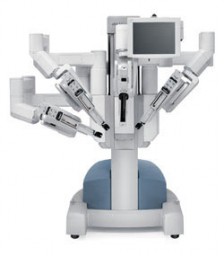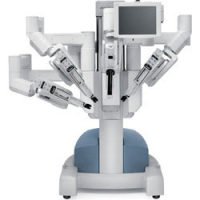Technology has been used to make nearly every facet of our lives easier. The use of technology in medicine has had an extensive impact, from the way computers are used to manage patient data, promote research, and encourage collaboration to the way that machines such as MRIs and other diagnostic devices have been used to more accurately identify health disorders and diseases.
Technology has made a significant impact on our current health care system. Some of the most interesting uses of technology are in robots, used in a number of applications for medicine. Here’s an overview:

Surgery
Robots are used to help surgeons control movement and to make more targeted incisions — especially useful when working on delicate procedures such as cardiac or neurosurgery. Other robots can make less-invasive procedures possible. Some examples include NeuroArm, used to perform complicated neurosurgery; CyberKnife, used to delivery targeted radiotherapy; and HeartLander, used to perform heart surgery without having to crack open a patient’s chest. Many, many more surgical robots have been designed for a variety of treatments.
Diagnosis
Robots can help improved diagnostic capabilities by offering more sophisticated methods of detection with less invasive procedures. For example, the Breast Biopsy Robot can provide 3D diagnostic information via ultrasound and perform an optional biopsy. The Rp-7 can help doctors examine and diagnose patients in other hospitals. The possibilities for diagnostic technology are endless.
Rehabilitation
Robots are often used to help treat patients undergoing physical therapy, including use in prosthetics. Some examples include the Exoskeleton, which can help patients with muscular dystrophy or other neuromuscular diseases to regain some strength; or the DEKA Arm, a prosthetic arm that can be controlled by a patient’s thoughts.
Education
Robots are especially useful when training new doctors and teaching surgical methodologies. The Pregnant Robot, for example, can simulate the birth of a child. Many other robots are available to teach other methods without allowing inexperienced students to make mistakes in actual clinical settings.
The use of robots in medicine is growing as the technology has proven to be more useful in a number of applications. More and more technical advances are being made that will produce more sophisticated robots and lead to even greater diagnosis and treatment protocols.
